It's August. Your vegetable garden is finally giving you more than mosquito bites and anxiety.
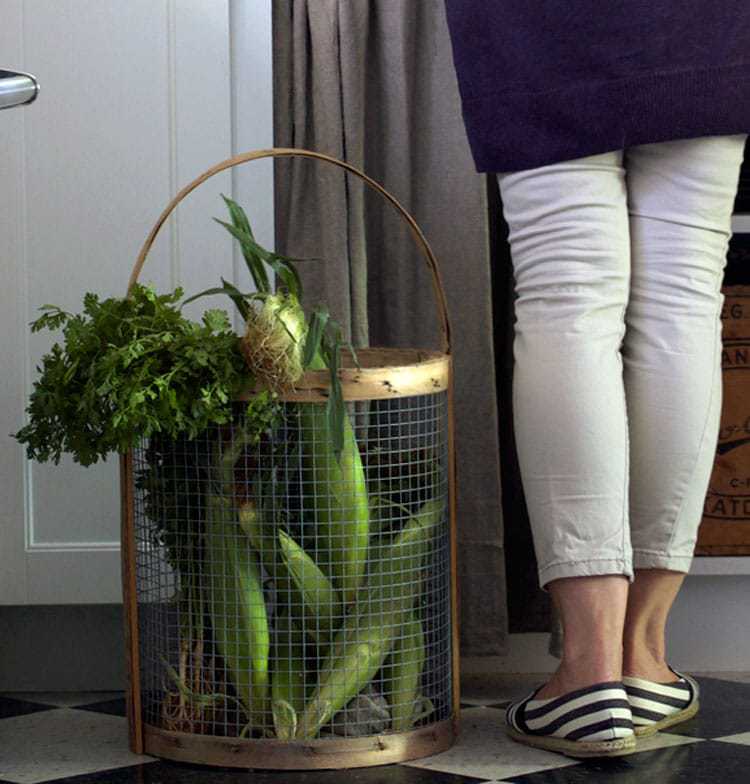
INSTEAD you're getting tomatoes, cucumbers, zucchini, and mosquito bites and anxiety. So it's a very exciting month.
I’ve been meaning to ask you; are you liking this whole vegetable gardening thing? I feel a little bit like I pushed it on you, but that just means we’re really good friends you and I. Because pushing vegetable gardening on my friends and family is kind of my thing.
That and eating potato chips. And of course sometimes swearing at inanimate objects, but really I think that’s everybody’s thing, not just mine.
Hopefully you’ve liked the whole experience so far because the hard work – harvesting and preserving is still to come. That’s what I’ll be focusing on in September, but for now let’s deal with this month – August.
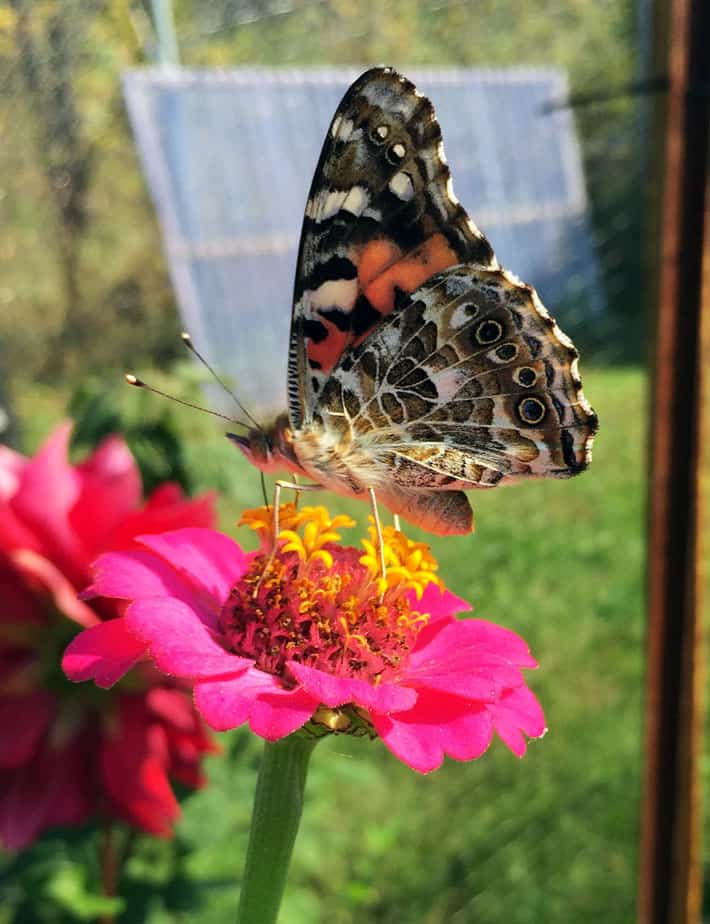
People automatically think of flower beds when they think of pollinators but vegetables put out a HUGE amount of flowers for bees and butterflies. A loaded vegetable garden will also be loaded with flitting and flying creatures. Just something to keep in mind that most people aren't aware of.
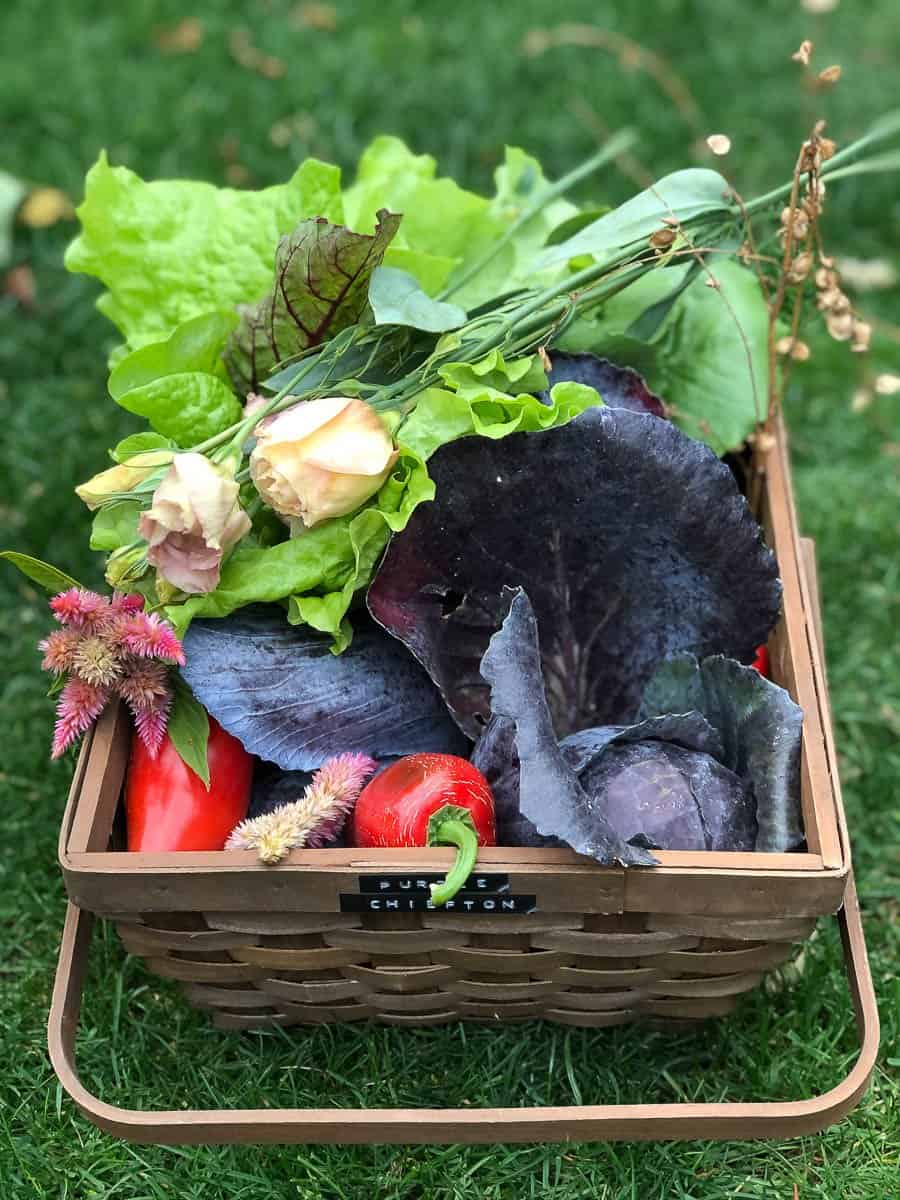
WHAT TO EXPECT FROM AUGUST.
You are still watering, weeding and keeping pests away. I guess now is as good a time as any to tell you those are things you’re going to always have to do in a garden.
I didn’t want to let you know that right up front because it might have scared you away from growing your own vegetables.
August you’re going to be busy picking things and starting to think about preserving them.

For instance; as soon as I'm done writing this post I'm going to head to the garden to see if I have any pickling cucumbers that are ready.
I have a bunch in the fridge that I picked 2 days ago and as soon as I get another pound of them, hopefully today, I'll make my bread & butter pickles.
AUGUST TASKS
MAINTENANCE
- Pick any herbs and dry them before they go to flower. If your basil is flowering already, pinch those flowers off.
- Top up plants that are heavy feeders with some compost.*
- Pinch off the top of your tomato plants around the middle of the month so they don’t grow any taller. Not because you care if they’re tall, but because if they stop growing taller they’ll be able to focus their energy into ripening fruit that’s on the vine as opposed to growing more leaves.
REMEMBER: In optimal conditions it takes 1 month for a tomato to develop to full size, then another month to become fully ripe. So work back 60 days from when you know bad weather is typical. That's when you should pinch back the top of your tomato plants. - Save seeds. Any plants that are heirloom varieties have seeds that will produce the exact same plant next year. Hybrids are crosses between plants and their seeds won’t produce an exact replica. Tomatoes, beans, lettuce that has gone to seed, peas, and squash are all examples of vegetables you can save seeds from.
- If you harvest a bed (like I did with garlic a couple of weeks ago) you need to do 1 of 2 things.
a) replant it with a short season crop like beets, carrots, peas, beans or lettuce, or
b) Rake it out and add a layer of compost on top so it's ready for spring planting.
The best thing to do is replant it with something so you don't have to deal with weeds until the end of the season. If you leave it bare, mulch it with something to keep the weeds down.
* Heavy feeding plants are corn, tomatoes, beets, cabbage and brassicas like broccoli, Brussels sprouts and cabbage.
HEAVY FEEDER OR LIGHT FEEDER?
Generally speaking things that grow above the soil are heavy feeders and things that grow below it (onions, carrots, leeks, potatoes, beets) are light feeders.
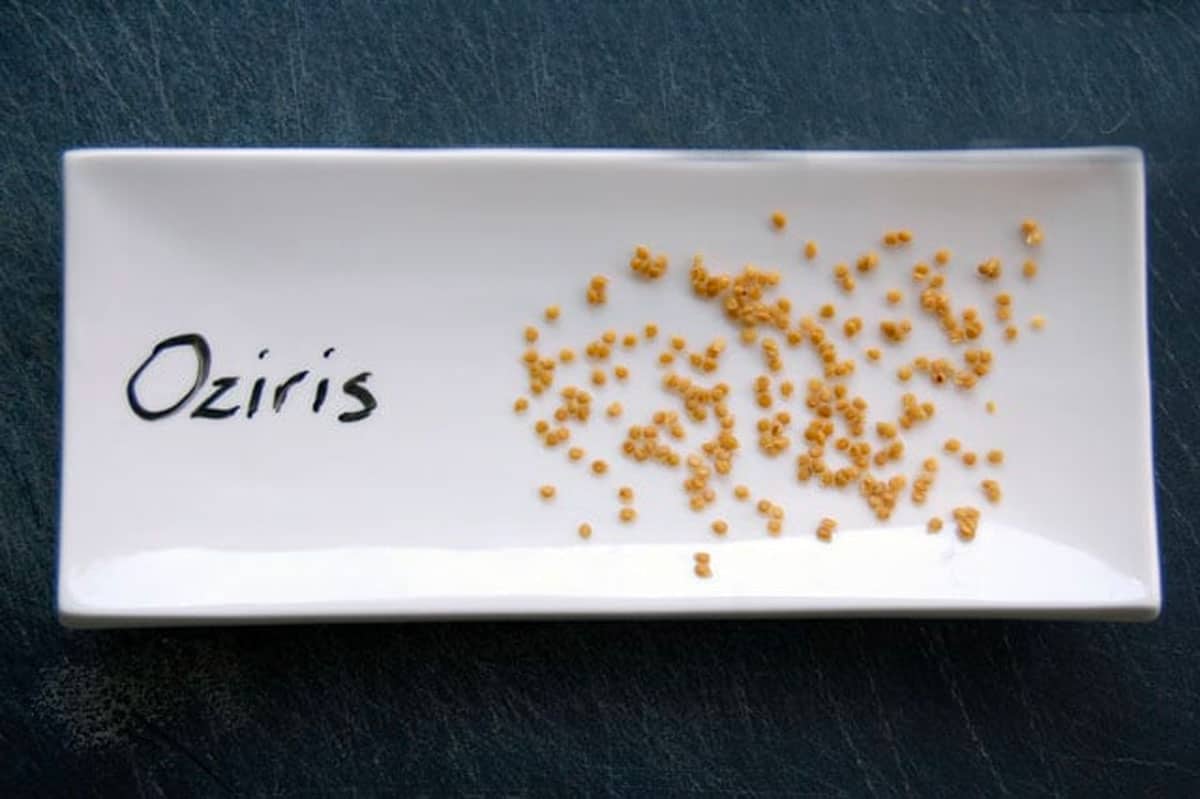
TOMATO SEED SAVING
Saving seeds is usually just a matter of letting the seeds dry. But tomatoes take an extra step to get rid of the jelly like coating around the seed. You need to soak the tomato seeds in water for a few days to dissolve it. You can read a full explanation of how to save tomato seeds here.
PESTS AND SOLUTIONS
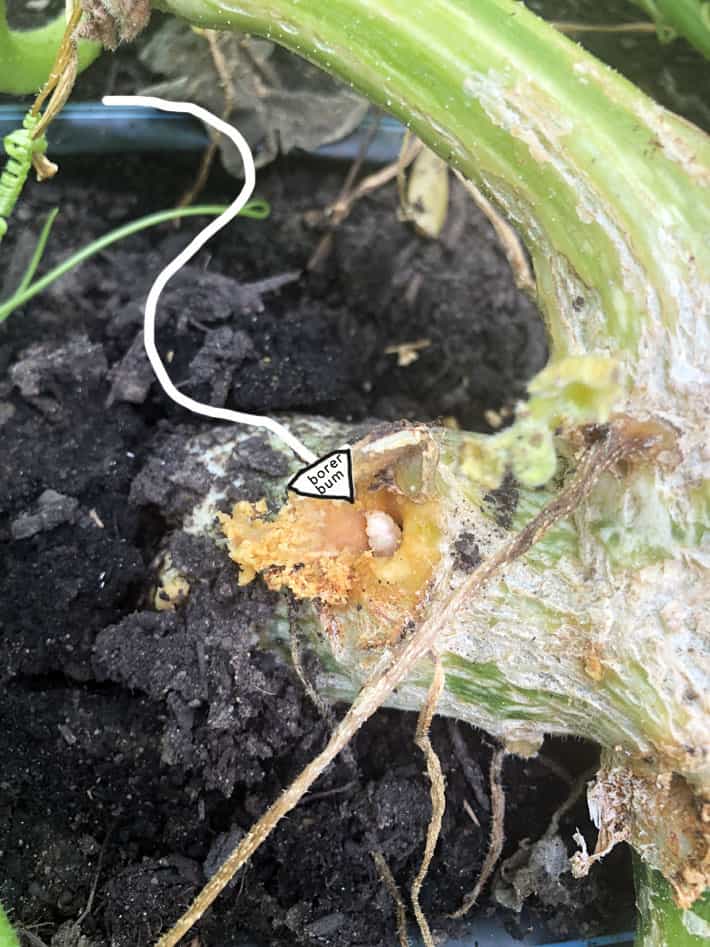
BUG & PEST CONTROL
In August you’re going to be tempted to let your whole garden implode because you’re sick of keeping up with weird bugs you didn’t even know existed before. Soldier on. You’re smarter than a corn earworm, I just know you are.
CORN EARWORMS
(You should be harvesting corn by now but just in case it's late ...)
Corn earworms are exactly what they sound like. They’re worms that eat the ear of your corn. They enter the corn at the top where the silk is growing as eggs laid by moths. They then hatch, eat the silk and travel down to the tip of the cob and eat their fill.
To stop them before they get started you can use an eyedropper to drip 4-5 drops of mineral oil (just regular drugstore mineral oil) at the tip of the husk where the silks are poking out.
ONLY use this treatment once the silks have turned a bit brown, showing they’ve been pollinated. Using it prior to pollination could stop your cob from forming.
VINE BORERS
Keep checking for vine borers at the base of zucchini and squash stems. Here's the whole guide to getting rid of vine borers.
CORN SMUT
Would you like to save this stuff?
I didn’t know corn could be smutty until I found out it could. Walking through my cornfield (O.K. my patch of corn in a 4’ x 4’ bed) I was a bit alarmed to see that one of my corn cobs had a monster oozing out of it. I mean you just don’t see that sort of thing every day. It was blue and puffy and weird.
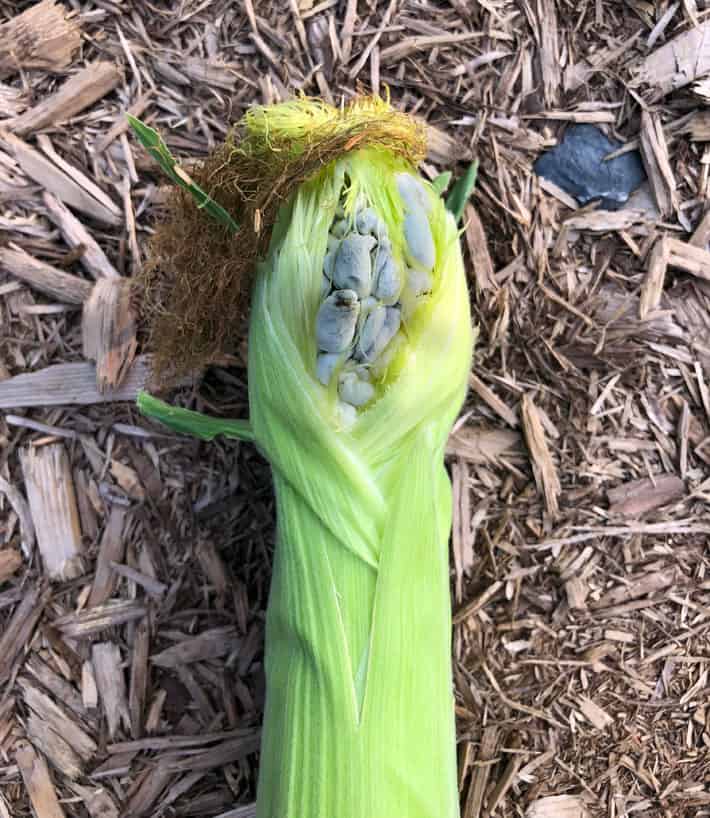
Corn Smut is a fungal delicacy that's a lot more expensive to buy (if you can find it) than corn. But I'd rather have my corn thanks.
Corn smut isn’t a pest, but rather a disease caused by a fungus.
You can read my entire post on corn smut but in a nutshell ...
Control: To control corn smut, remove it as soon as you see it. It doesn’t scatter its spores until it starts to turn black, so picking it off when it’s grey or blue will help contain the spread. Also clean up all husks and stalks immediately after harvesting to help stop the spread of unseen smut.
Prevention: The smut enters the corn at injury points so try not to tear the husks of your corn and refrain from peeking inside growing husks/cobs to check on your corn. That provides a perfect entry point for the smut.
POWDERY MILDEW
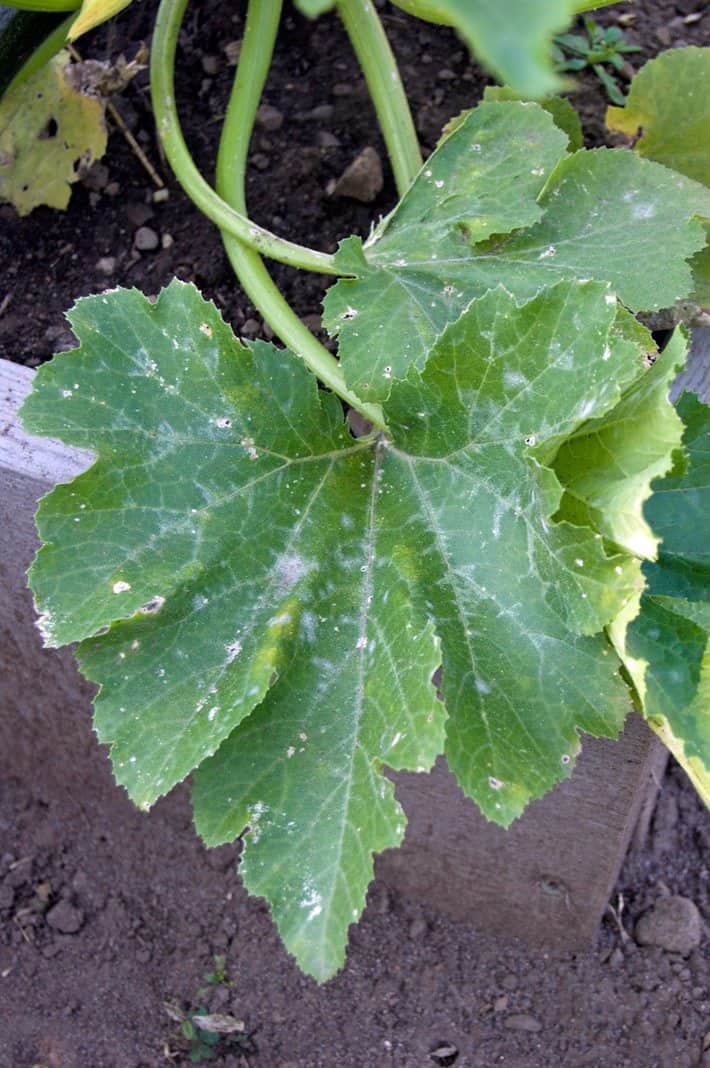
Squash (both summer and winter) are where you’re going to find yourself battling powdery mildew. Contrary to logic, powdery mildew actually thrives in HOT dry weather.
So spraying your plants with a hose when it has powdery mildew will actually help it.
I have a whole post on how to control powdery mildew and you CAN control it.
BLOSSOM-END ROT
If you’ve ever grown tomatoes to have the bottom of them turn black and then spread around the tomato, you’ve had blossom-end rot. It isn't a virus or other disease that can spread. The issue is calcium.
It used to be thought that it was caused by not having enough water, but it’s actually either the plant not having enough calcium, or more accurately - not being able to absorb the calcium - because the soil is too dry and needs to be watered.
Preventing it.
This is where the water comes in. Making sure your tomatoes are evenly watered so they can take up calcium throughout August will help prevent blossom-end rot. Also amending your soil whether it’s in a container or in the garden will help give your tomatoes the calcium it needs to prevent blossom-end rot.
(having said that most gardens have plenty of calcium, the problem is usually the tomato plant isn't able to access it. Wet soil from watering allows the plant to take the calcium up)
Treatment
THERE'S A 90% CHANCE (i made that figure up but it's close) THAT YOU JUST NEED TO WATER REGULARLY TO ELIMINATE BLOSSOM END ROT.
ONLY treat your soil if you have tested it and determined it actually needs calcium.
You need to make a slurry of limestone and water. Use “Pelletized lime” which you can find in any building store. Add 1 large handful of lime to 1 gallon of water and mix it up until it’s a grey slurry. Water your affected tomatoes with the mixture at a ratio of around ½ gallon per tomato plant.
If you have 10 tomato plants, fill a 5 gallon bucket with water, add 5-6 handfuls of lime and you’ll have enough lime slurry for 10 tomato plants.
BLIGHT
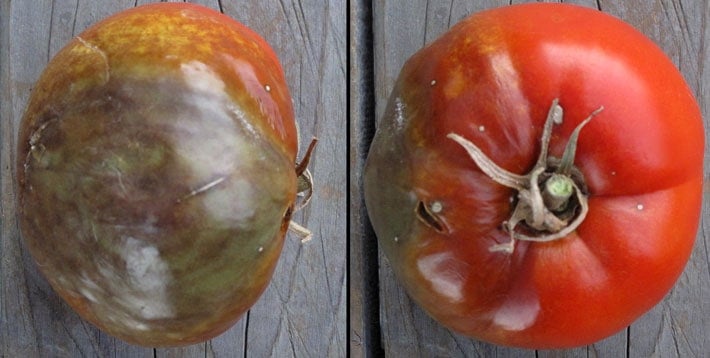
As in July, you still need to keep an eye out for blight.
If your tomato leaves are drying out, turning yellow and getting spots chances are you have blight.
If you can find a biofungicide with Bacillus subtilis it will stop blight. But it's difficult to find.
TOOLS
You’ll have all the same standard tools as I mentioned last month and the month before and the month before (dutch hoe, clippers, trowel, shovel, gardening gloves, stakes/cages, row cover, compost bin, bags or baskets for carrying vegetables home, fresh water to keep yourself hydrated, scissors and a knife for cutting off damaged sections of plants and for cutting off vegetables).
Additional things you’ll need in the garden for August are:
- Pelletized Lime (if tests show your soil is calcium depleted, otherwise just water more regularly)
- Compost for giving to heavy feeding vegetables (those that grow above ground).
- Garbage bags for putting diseased foliage and stems in.
ALWAYS remove diseased leaves and vegetables from the garden and put them in the garbage. Not in the compost bin or anywhere else in the garden.
WHAT CAN BE PLANTED THIS MONTH
You can throw in some fall peas, beans, carrots, beets, radishes and leaf lettuce now. All of these things have shorter growing seasons and can handle shorter days and cooler weather.
Sow your lettuce under a piece of burlap or shade cloth because lettuce is not a heat loving plant. The bit of shade will help the seeds germinate by cutting down on the heat plus it’ll prevent the plant from bolting and turning bitter once it’s growing.
If the late August weather is cooler, you can remove the shade cloth.
Happy gardening.


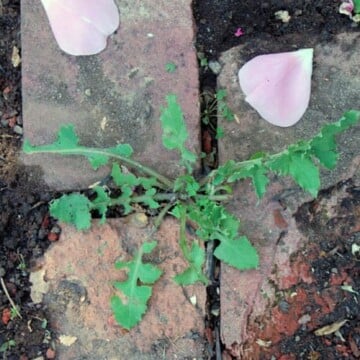
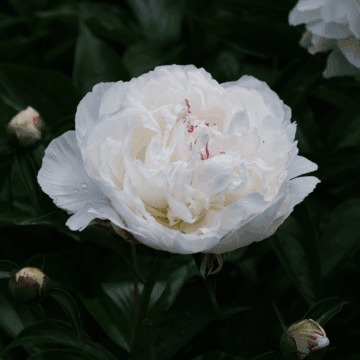

Jennifer Taylor
I could never bring myself to pinch the flowers off my basil plants (I live in Arizona (U.S.) where it is hot most of the time, (especially after menopause). I found the flowers on them simply beautiful, and the bees loved them. The green and purple basil plants grew almost as tall as me, over 5 feet, and thrived for over two years. Sadly, my negligence during a rare "frost" in my state killed them. Going to plant them again next spring.
Him again.
The tomatoes are donning lifejackets.
Peppers are going Hulk or something because most plants have fallen over from the weight of the fruit.
Only way to plant peas would be to launch the kayak and sow them like rice.
Watering however, no problem.
Hoses are wrapped and hung for the winter.
Karen
Yes watering hasn't been so much of a problem this year. My tomatoes don't need life jackets. If they fall into the abyss below they'll land on a life raft of weeds. ~ karen!